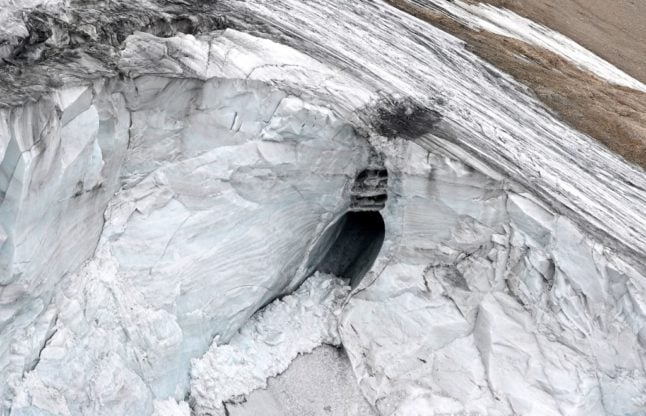A section of the country’s largest Alpine glacier gave way on Sunday, sending ice and rock hurtling down the mountain, in a disaster blamed by Italy on climate change.
“The number of confirmed victims is nine, president of the northern autonomous province of Trentino, Maurizio Fugatti, told reporters.
Three others were still missing, he said on Twitter, adding that the search was continuing with the use of drones.
READ ALSO: Italy glacier collapse: The struggle to find the missing climbers
The updated death toll came as some families accused the authorities of leaving the glacier open despite obviously dangerous climbing conditions.
Deadly avalanche
An avalanche sparked by the collapse of the largest glacier in the Italian Alps killed at least nine people and injured eight others on Sunday, an emergency services spokeswoman said.
The glacier collapsed on the mountain of Marmolada, the highest in the Italian Dolomites, near the hamlet of Punta Rocca, on the route normally taken to reach its summit.
The disaster struck one day after a record-high temperature of 10 degrees Celsius (50 degrees Fahrenheit) was recorded at the glacier’s summit.
“An avalanche of snow, ice and rock hit an access path at a time when there were several roped parties, some of whom were swept away,” emergency services spokeswoman Michela Canova told AFP.
Italian Prime Minister Mario Draghi expressed his “sincerest condolences” to the victims and their families on Twitter.
Il Presidente Draghi esprime il più profondo cordoglio per le vittime del terribile crollo sulla Marmolada. Il Governo è vicino alle loro famiglie e a tutti i feriti
— Palazzo_Chigi (@Palazzo_Chigi) July 3, 2022
Six people had been confirmed dead at the time and eight were injured, she added. Since then, rescue services found the bodies of three more victims. Three hikers are still missing.
Helicopters were scrambled to take part in the rescue and to monitor the situation from the air. Rescuers in the nearby Veneto region of northeast Italy said they had deployed all their Alpine teams, including sniffer dogs.
Two of the injured were taken to hospital in Belluno, another in a more serious condition was taken to Treviso and five to Trento.



 Please whitelist us to continue reading.
Please whitelist us to continue reading.
Member comments